Maxxis: How to Choose the Right Tyre

Maxxis tyres are a common sight on the trails for good reason. Not only do they make some of the best performing tyres on the market but their range is broad, meaning there’s a tyre out there for everyone. Whether you’re a diehard enduro rider who’ll happily sacrifice weight and rolling speed for ultimate traction, or you’re an XC racer looking for a competitive edge over your opponents, Maxxis has something in their range to fit your needs, but with so many different tyres and variants, how do you know what to pick?
Casing, rubber compound and tread pattern all make a big difference to how a tyre performs on trail so, to help find the right tyre for you, we put together this guide explaining what all this technical jargon means in plain english. Once you understand the terms below, you should be able to look at the side of any Maxxis tire and know how it will behave on the trail.
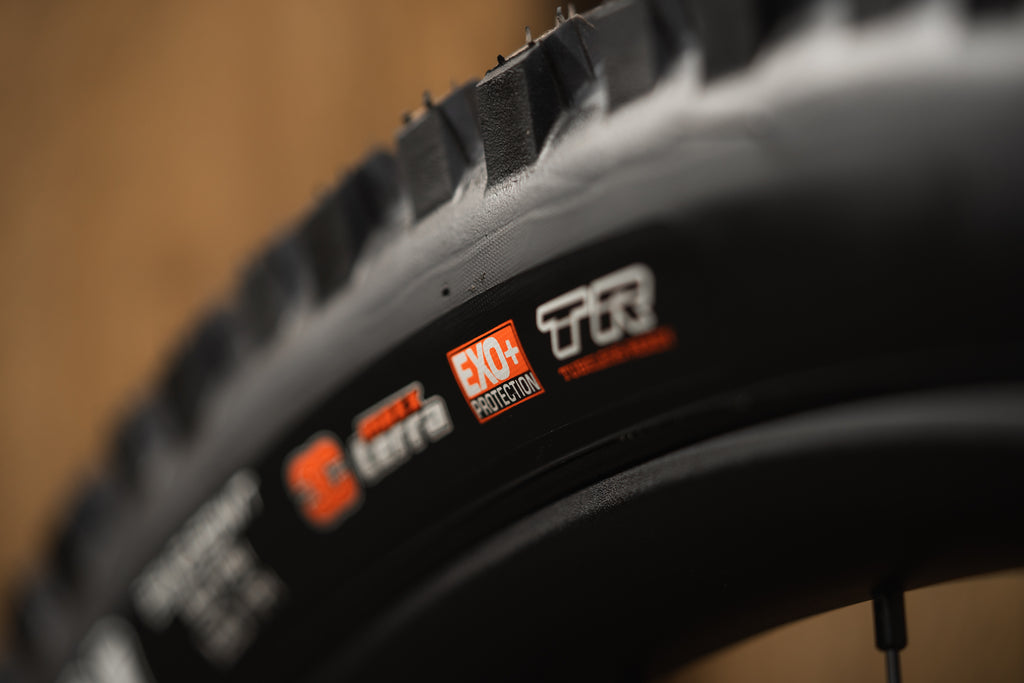
CASINGS
The casing of a tyre is the skeleton around which the whole tyre is constructed, the thicker the casing the heavier and more puncture resistant that tyre will be, but that’s not the whole story. A lighter casing tyre will roll faster than the same tread pattern in a heavier casing and give a more lively feel, whereas the heavier option will have more support in turns due to the tire deforming less resulting in a more damped and muted feeling on trail.
Maxxis make four common casing types for MTB, which in order from lightest to heaviest are: EXO, EXO+, DoubleDown and DH.

EXO - The lightest and fastest rolling casing in the Maxxis MTB tyre lineup. EXO casings use a cut and abrasion resistant material in the sidewall of the tyre to balance puncture protection with weight.
Choose EXO casings if your riding generally takes you to trail centres or more mellow terrain where having a great balance of rolling speed and puncture protection is key.
EXO+ - The happy medium of tyre casings, EXO+ uses the same sidewall protection as EXO with an additional puncture protection layer and strip near the rim interface to protect against cuts and pinches while also increasing the support it gives in turns.
Choose EXO+ if your riding is more varied between trail centre terrain and less rocky enduro trails or if you are a lighter rider. Some of our Dirt School coaches use EXO+ tyres to give a slightly lighter setup as well as slightly increasing rolling speed.
DoubleDown - The heaviest and toughest of the all round tyre casings. As the name implies, DoubleDown casings use 2 layers of regular tyre casing stacked on top of each other to give lots of support and protection.
Typically found on Maxxis’ more gravity oriented tyres, DoubleDown is for riders who regularly ride technical and rough enduro terrain and don’t mind sacrificing some rolling speed for more support, puncture resistance and trail damping.
DH - Originally designed purely for downhill race bike use, but now often seen on E-Bikes and even longer travel Enduro bikes under more demanding riders, DH case tyres are the strongest and stiffest option you can buy for when maximum protection is needed.
Solid feeling and incredibly hard to puncture, they may not roll and pedal as easily as the other options but if you want maximum support for big hits and high speeds without risk of damage this is your option.
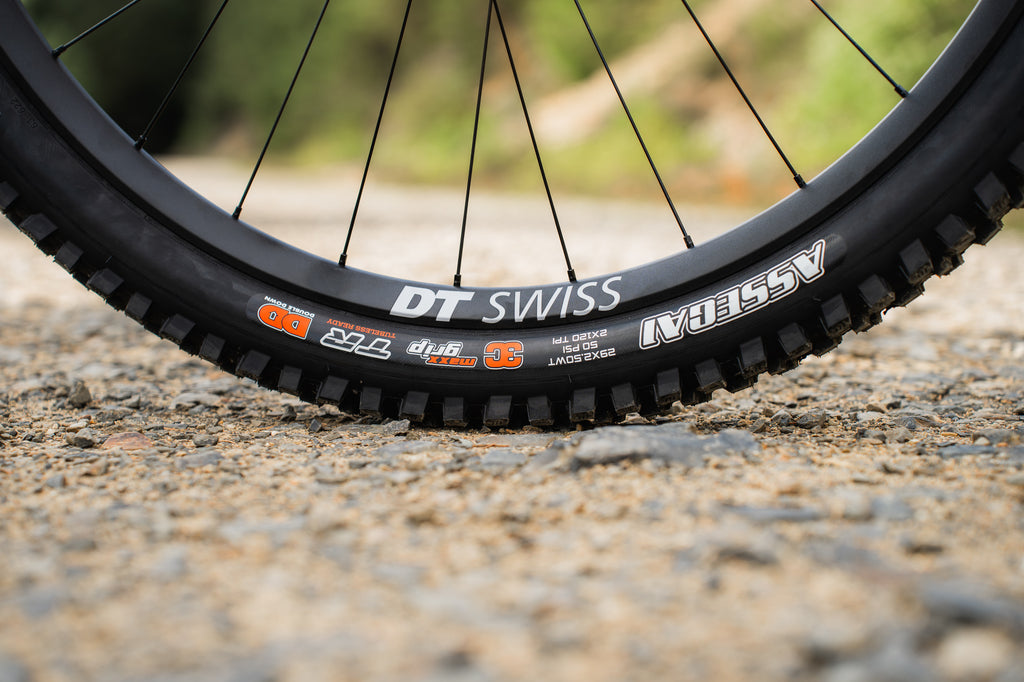
RUBBER COMPOUNDS
As your direct connection to the trail, the rubber compound your tyre is made of has a huge effect on its performance and behaviour. Softer rubber will give you the best traction at the expense of rolling speed and wear, whereas a tyre with a slightly harder rubber blend will wear slower and roll faster but won’t give the same level of grip and confidence, especially in the wet.
Maxxis mix three different compounds of rubber into each of their premium MTB tyres and offer three versions: MaxxGrip, MaxxTerra and MaxSpeed. All three use the same rubber compounds but in varying quantities to achieve different grip, wear and rolling speed characteristics.
If your Maxxis tire doesn’t have one of these three labels on it then it’s made from a simpler and firmer two rubber mix. It’ll roll and last well, but the grip level will be noticeably lower than the premium 3C options.
MaxxGrip
The softest triple compound blend in Maxxis’ lineup MaxxGrip, as you might have already guessed, gives the most grip and is the choice for gravity oriented riders for the front tyre, or both if it’s especially slick.
Using more of the softest rubber compound on the cornering knobs and a thinner base layer of harder rubber means MaxxGrip knobs deform more to the trail to maximise all available traction. This means a MaxxGrip tyre will roll slower and wear faster than the others so many riders will pair a Maxxgrip front with Maxterra rear to extend the wear life of their rear tire. For absolute maximum winter grip, a double Maxxgrip setup will still give the ultimate traction.
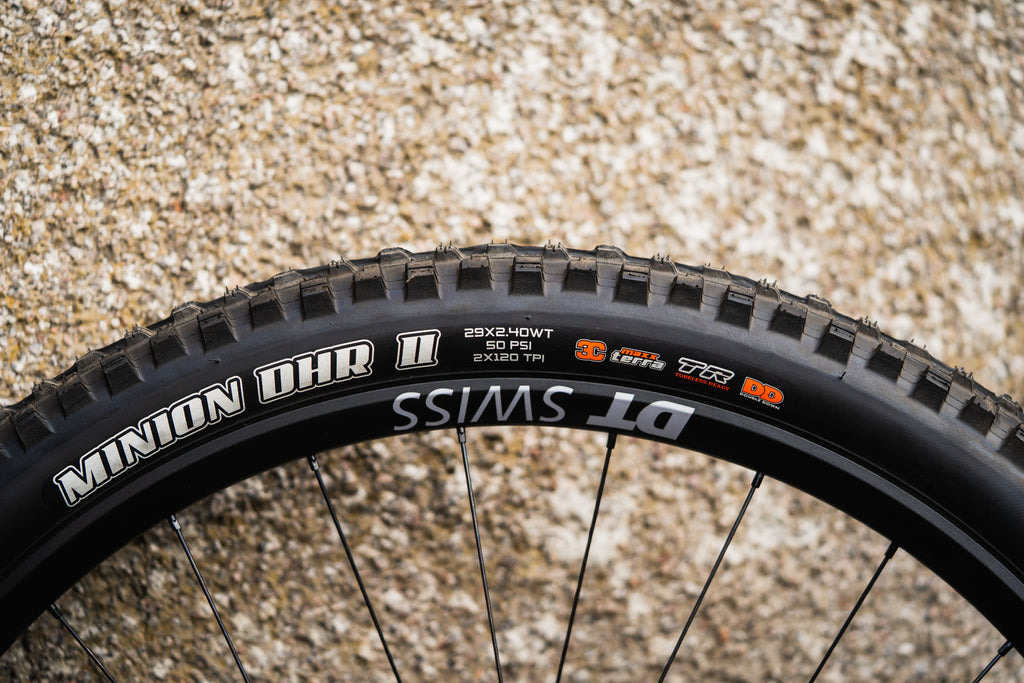
MaxxTerra
Using the same three compounds as MaxxGrip, MaxxTerra uses a thicker base layer of harder rubber to give each knob more support. This means a MaxxTerra tyre will provide slightly less grip than a MaxxGrip but will roll faster and last much longer. However they still provide great traction and are great as a rear tyre for an enduro bike or front and rear for a more trail oriented setup or drier conditions.
MaxxSpeed
With a higher proportion of the firmer rubber, MaxxSpeed is found in the Maxxis XC tread patterns where rolling speed is the main priority. For flat riding, climbing and low angle descending, this rubber is like a turbo but at the compromise of wet weather traction.
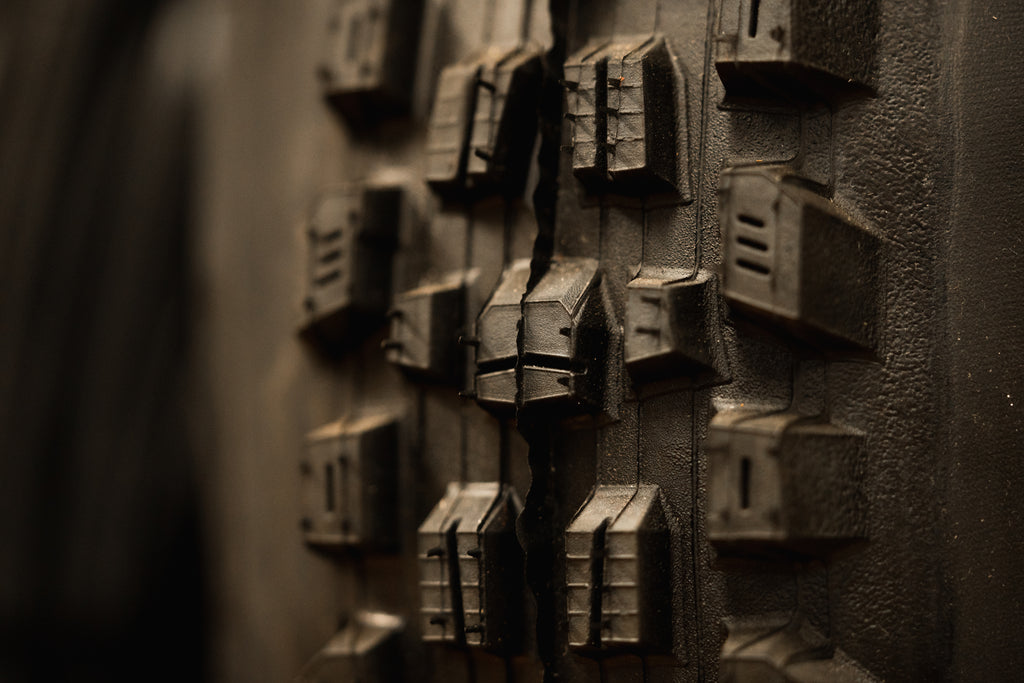
TREAD PATTERN
The thing most people look at when choosing their tyres and one of the main factors which determine how it performs, the tread pattern defines how well a tire will work on different types of terrain. Generally speaking a tyre's intended use can be determined by looking at two things; the tread spacing and the tread depth.
Tread Spacing
The gaps between the tread knobs on the tyre are a fairly good indicator of the conditions in which the tyre is designed to be used. Widely spaced tread means the tyre will hold on to less mud so won’t clog as easily, however this also means the tire puts less rubber down onto the trail producing less peak grip on root, rock and hard surfaces than a design with a more closely spaced tread.
Conversely, a closer spacing puts gets lots of rubber down onto the trail, so will give excellent grip while the trails are relatively dry, but the tread pattern will clog with mud faster in soft conditions reducing grip. Read on below to see how some of the most popular patterns we stock compared here:
Assegai: This has the closest spaced tread so performs best in dry to mixed conditions with incredibly consistent grip but is the most prone to clogging in thick mud.
Minion DHF and DHR II: These tires use a slightly wider spacing to still perform well in the dry while clearing mud noticeably better. Between the two, the F rolls a little better while the DHR delivers better braking grip. If you had to pick one tire for every possible condition then the Minions are a great compromise working well almost everywhere with many top riders choosing double DHR II tires for their race bikes.
Shorty: With its very widely spaced and tall tread the Shorty is the mud specialist, digging through soft ground and clearing better than any other option but can feel noticeably less secure on a hard surface due to its tall, narrow tread knobs and it rolls slightly slower than either of the others above.

Tread Depth
Where tread spacing is an indicator of whether the tyre is more wet or dry condition focussed, tread depth gives us an indication of whether the tyre is designed to roll fast, or to give as much grip as possible. Deeper treads will bite into a soft surface much more effectively than a smoother tire, but at the expense of rolling speed.
An XC race race tyre will use a very low profile tread to maximise the rolling speed of the tyre at the expense of grip, so a tyre with low profile, closely packed tread would likely be best on a fast XC bike in dry conditions. A wet weather enduro tyre, on the other hand, would use a much deeper tread pattern, with widely spaced knobs.
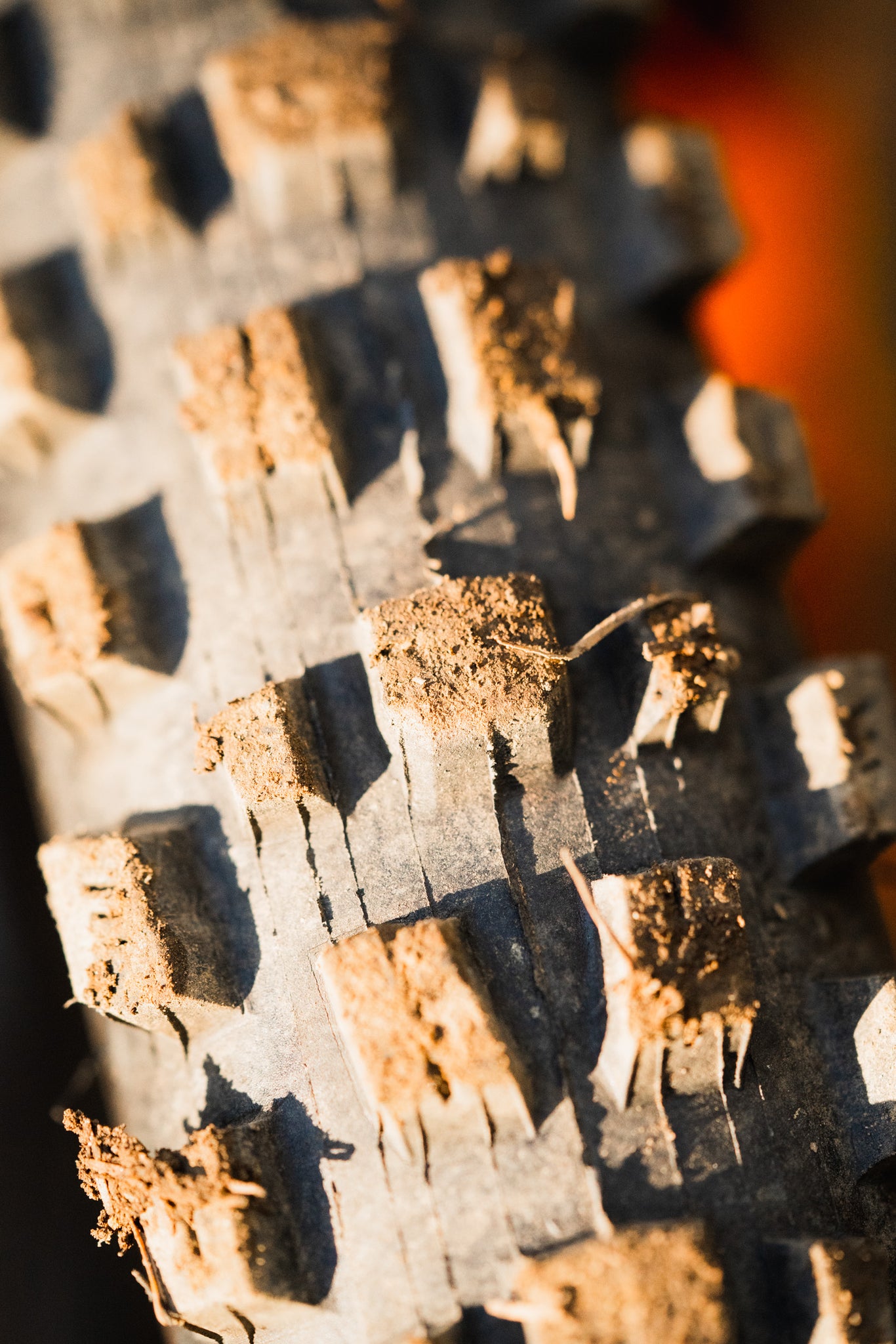
WHAT DO WE USE?
Our team of Coaches and Guides are using exclusively Maxxis tyres on their enduro bikes. By far the most popular combination in our team is a front Assegai Maxxgrip paired with a Minion DHR II Maxterra which gives excellent cornering and braking traction in a wide range of conditions. As the trails start to get a little wetter, a Minion DHF or occasionally Shorty with its wider spaced tread might be switched in on the front to cut through the slop.
Many of our Coaches and Guides run DoubleDown casings front and rear, however a few of the lighter riders also use EXO+ options to reduce weight and benefit from the faster rolling speeds and livelier handling. All of our team use MaxxGrip on the front of their bikes and a mix of Maxxgrip or MaxxTerra on the rear.
If you have any questions about the Maxxis range, or just want to come in and chat tyres, feel free to pop into the shop. We’re open 9am-5pm every day. Otherwise you can get in touch via email or telephone.
01896 831 429
shop@tweedvalleybikes.co.uk




Leave a comment